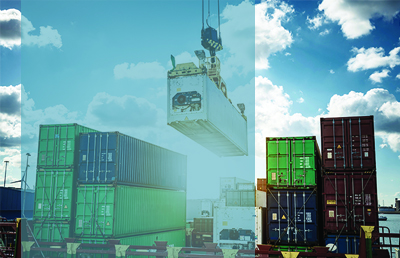
Among the myriad of challenges brought on by the coronavirus, supply chain disruptions are certainly among them. Use this checklist to review how suppy chain changes...
When responding to unexpected challenges — whether it’s the coronavirus (COVID-19) or other unforeseen disasters — we find the best approach is to remain steadfast and calm. Business owners and leaders face a number of ever-changing issues as a part of overall business management. Add a major global incident to the mix, and you may find yourself not knowing where to start. Take a look at the big picture so you can approach the situation strategically and keep your business moving forward despite new obstacles.
Would you like to talk with an advisor? Contact us.
First, step back and review your current state, understand the external forces at work, and come up with a plan. This checklist can help you get started. After all, your ultimate goal is to continue providing a safe — and productive — business operation.
Your supply chain
Rising labor rates, tariff management, and now the coronavirus are putting unprecedented pressure on leaders to diversify supply strategy. Those with high exposure in China are particularly concerned. Here are a handful of things you can be doing now to address risks.
- Recognize the warning signs. Continued supplier shutdowns (Chinese suppliers should be up and running again by now … most are); absent workers; inability to secure local transport, dock, or customs workers; and transport, warehouse, port, or container backlogs are all signs of trouble. Many companies, especially small businesses, may be running low on cash. Buyer beware if you are asked for deposits without committed production dates.
- BFF your logistics partner. Call them weekly, as conditions are changing daily. Josh Enger, managing principal of CLA’s transportation and logistics practice, comments: “Though it is too early to truly understand the impact on the transportation industry, we know that delays and freight rate increases are a real risk. All that aside, I do believe there is a very likely scenario that the ‘ramp up’ will happen at a slow enough pace that significant ripples in the moving of products could be avoided. Being proactive and communicating with your logistics partner to understand his or her exposure will be important for you to understand the true picture of when your organization could see normalization in your supply chain.”
- Book airfreight ahead. Capacity is an issue. As the Chinese facilities ramp up production (currently facilities are operating with only about two-thirds of their workforce), delays of 45-60 days are being reported. Those numbers must be added to 30 – 40 days for moving ocean freight. Canceled commercial flights are not helping ease the airfreight capacity crunch. Your logistics team will need at least an additional week to find options for air, and quotes will only be available after space is confirmed.
- Prepare and execute a Plan B. We understand how difficult it is to move your supply chain relationships; however, having alternative options is key to long-term flexibility and sustainability to survive the crisis du jour and future shocks. There are viable options in Southeast Asia across industry sectors. Professionals at Complete Manufacturing and Distribution (CMD) are helping companies worldwide secure viable alternatives.
- In China for China. China is the fastest-growing market in the world and is on track to become the world’s largest economy. If your global growth plans include selling in China, a move outside China may not make sense. If the goods you need are exclusively for export, then markets beyond China may be a better Plan B.
- It’s a buyer’s market in China. As capacity shifts elsewhere, factories in China may be willing to make a deal. Consider shopping around in China. Home to a third of the world’s manufacturing, few regions can beat China’s vertical integration of supply. It may be worth exploring whether a better deal in China is more cost- and time-effective than moving to a less integrated manufacturing market. As with any decision, it’s all about the tradeoffs in cost, delivery, and quality.
- Know thy costing. Back to basics. Many companies are experiencing an increase in quoting activity to replace Chinese suppliers. Evaluate your pricing and costing methodology to understand the impact of these new opportunities on profitability at the company (versus the job) level and how you may be able to use excess machine capacity to be aggressive in taking on these new relationships.
How we can help
Looking at past outbreaks of MERS and SARS, the coronavirus outbreak will slow down business in China (and potentially across Asia and the rest of the world) for months. Supply chain changes cannot and should not be about chasing the cheapest quote. The cheapest quote may not be the cheapest price, especially when considering that switching costs, extra engineering support, and quality headaches can erode promised financial gains. At CLA, our experienced professionals can help you navigate supply chain disruption, from reviewing your operational challenges to understanding the impact of tariffs so you can create a data-driven, informed business strategy. Please contact us today.

